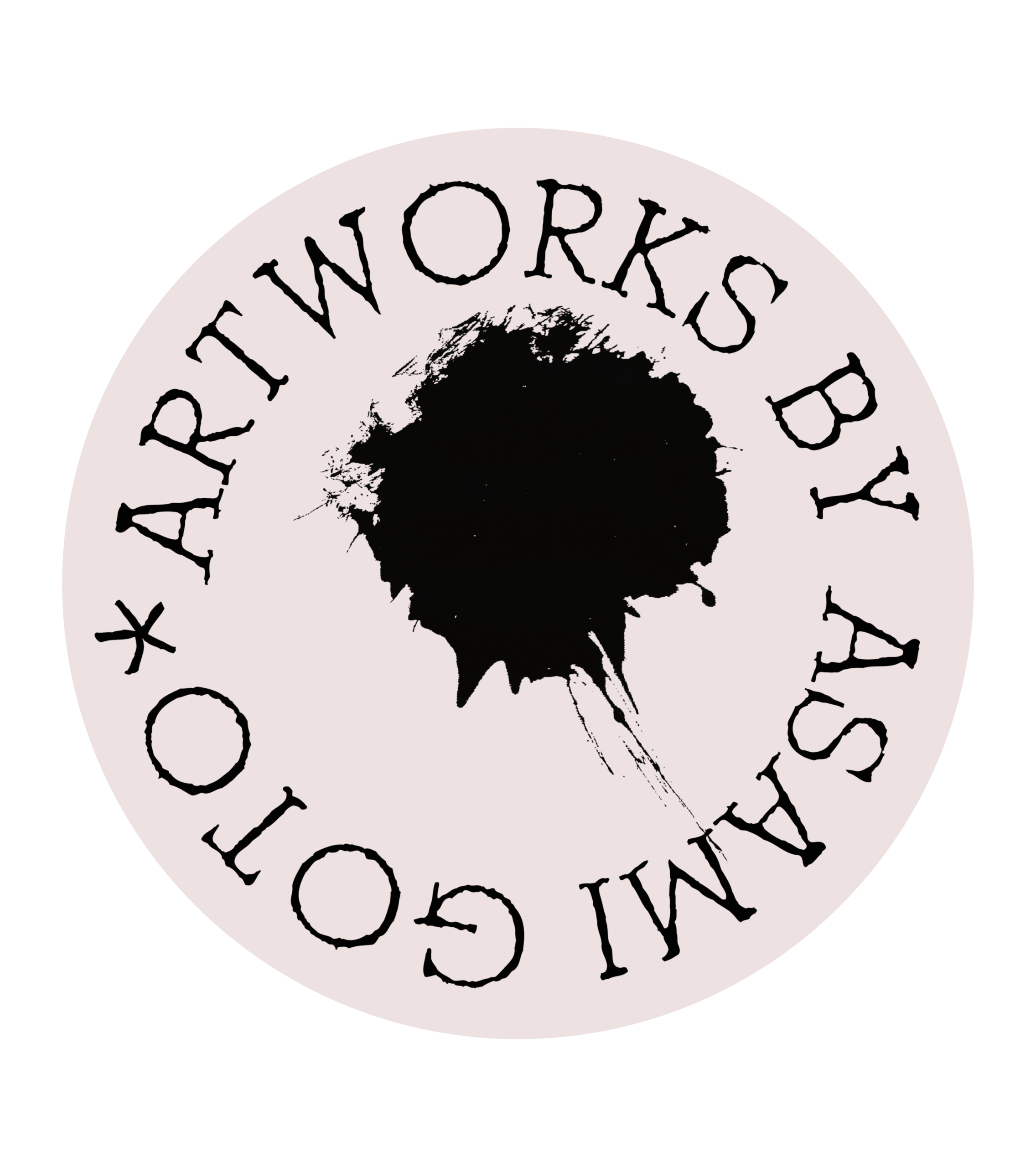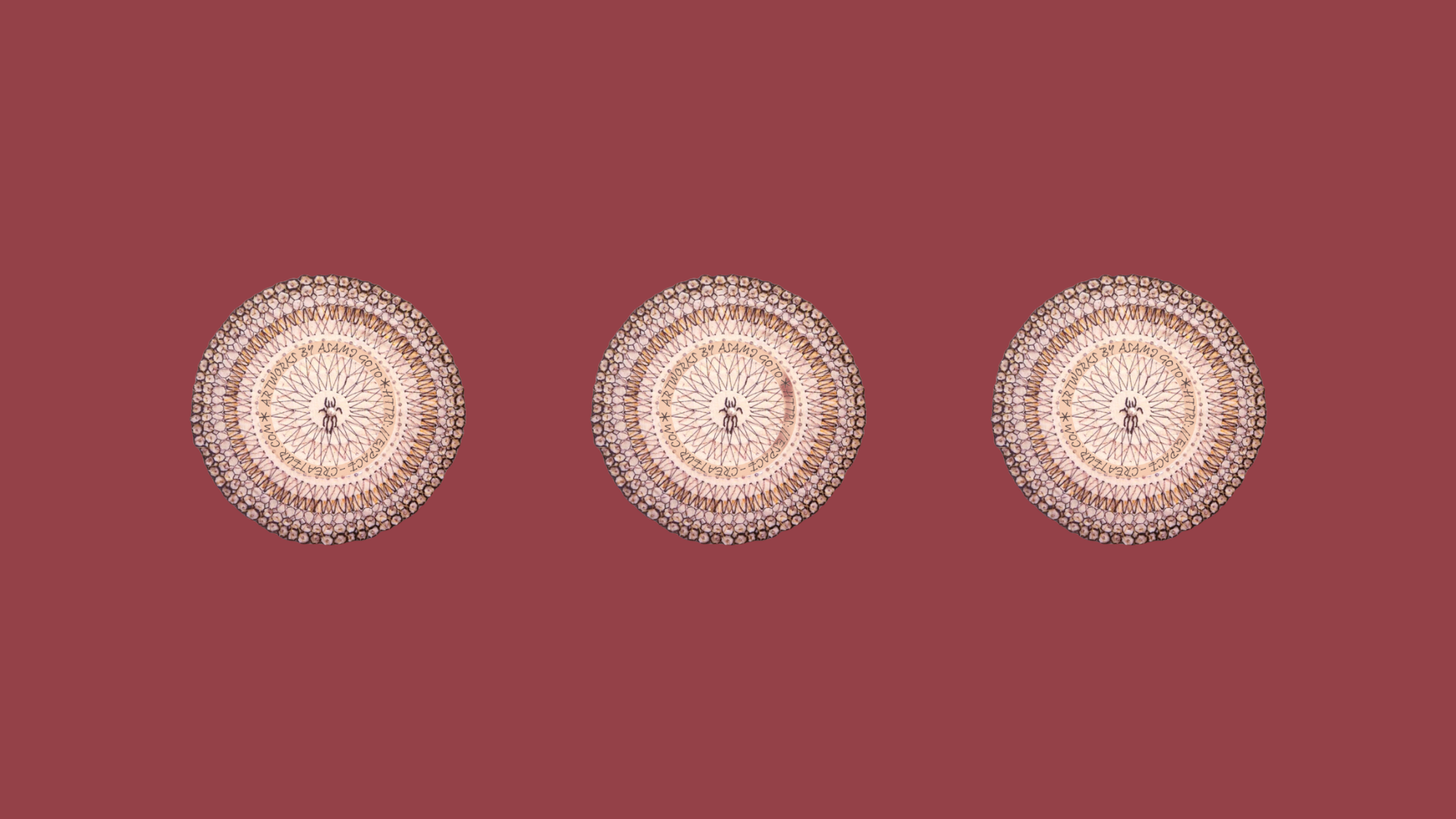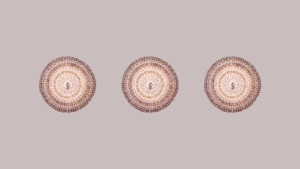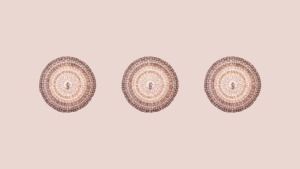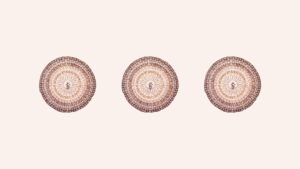幾何学は、沈黙のことば ─ Geometry as a Silent Language
【幾何学模様との出会い/ Encounter with Geometric Patterns】
日本には古くから、「刺し子」という手仕事の文化があります。
なかでも麻の葉模様をはじめとする幾何学的な文様は、日々の暮らしに静かに寄り添い、布の上に丁寧に縫い重ねられてきました。
とりわけ私の身近には、刺し子の技術を用いてオリジナルのテキスタイルアートを手がけていた母の存在があり、幼い頃から、幾何学模様を施した布が家のあちこちにある風景が、当たり前のように広がっていました。
幾何学は、どこか厳かでありながらも親しみ深く、静かに暮らしの呼吸と響き合う、そんな存在だったのです。
やがてテキスタイルアートを本格的に学ぶためにフランスへ渡り、 ーーー最初は語学習得を目的にブルゴーニュ地方・ディジョンの大学に通っていましたが、
いつしか町並みに刻まれた幾何学のかたち──建物の外壁や屋根、ステンドグラスの意匠が、
心に深く残るようになりました。
English
In Japan, there is a long-standing tradition of handwork known as sashiko.
Among its many patterns, geometric motifs such as the Asanoha (hemp leaf) design have quietly accompanied everyday life, carefully stitched into fabric with rhythmic precision.
In my own life, this tradition was especially close—my mother created original textile art using sashiko techniques.
Since childhood, I was surrounded by these geometric patterns; they were everywhere in our home, woven seamlessly into the scenery of daily life.
Geometry, to me, was never something distant or abstract.
It was both solemn and familiar, quietly resonating with the breath of our household, like a gentle rhythm always present in the background.
In time, I moved to France to study textile art in earnest.
At first, I attended a university in Dijon, in the Burgundy region, mainly to learn the language.
But over time, the geometry etched into the townscape—the patterns on walls and rooftops,
and the stained-glass designs—left a deep and lasting impression on me.
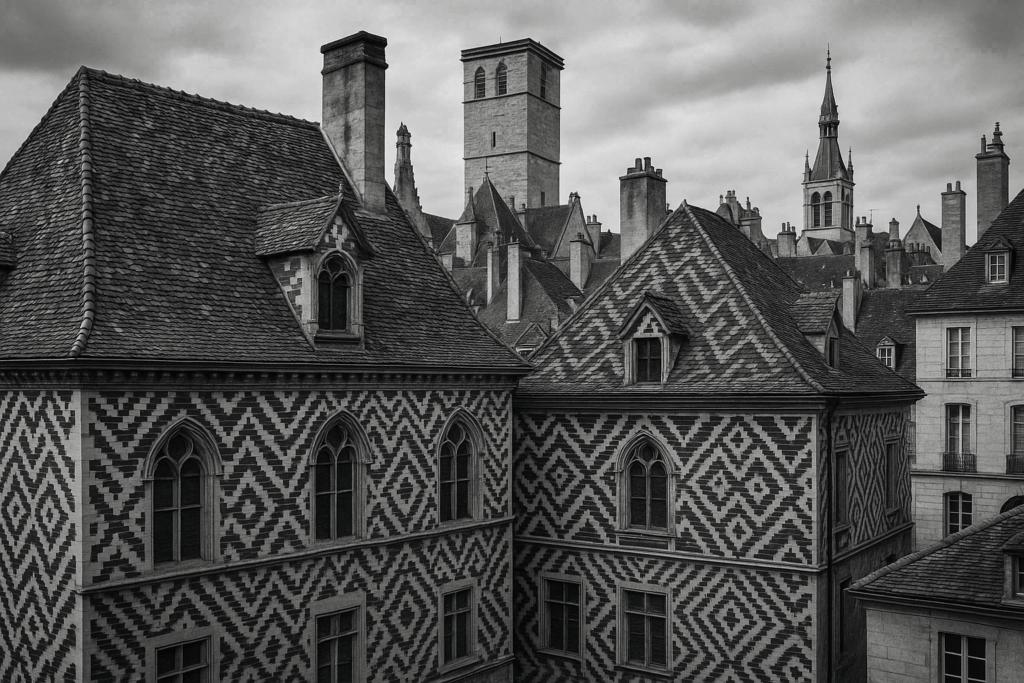
フランス・ディジョン/ Dijon, FRANCE
【幾何学模様が語りかけるとき / When Geometry Begins to Speak】
その後、学びの場をパリへと移し、アートに満ちた日々が始まります。大小さまざまな美術館を巡るたびに、新しい視点がひらかれていく感覚がありました。
皆さんにとって、「初めて感性を揺さぶられた美術」とは、どのような出会いだったでしょうか?
私の場合、それは少し意外なことに、イスラーム美術に見られる幾何学模様でした。街角でふと目に入るモチーフのなかに、どこか異国のリズムが漂っている──そんな感覚がありました。なぜフランスの地で、イスラームの幾何学模様に惹かれたのか。その理由はすぐには分かりませんでしたが、不思議とその印象は、内側で静かに根を張っていったのです。
そしてその興味は、装飾と構造が響き合うアール・デコ様式へとつながっていきました。直線と曲線が織りなすリズム、構築性と優美さが共存するデザイン。そこには、まるで生命の拍動のようなものが宿っていました。調和と静けさを内包したそのかたちは、いつしか、私が潜在的に探し続けていた「生命のリズムが息づく、調和のとれたかたち」そのもののように思えたのです。
English
Eventually, I moved my base to Paris, where my days became filled with art.
Each visit to the city’s many museums opened up new perspectives, as if gently expanding the way I saw the world.
What was the first artwork that ever moved you deeply?
For me, somewhat unexpectedly, it was the geometric designs found in Islamic art.
There was something in the patterns I encountered on the streets—motifs that seemed to carry the rhythm of a distant land.
Why was I so drawn to these Islamic geometric forms while living in France?
At the time, I couldn’t explain it. But the impression they left slowly took root within me, quietly, like a seed waiting to grow.
This fascination eventually led me to the world of Art Deco, where ornamentation and structure harmonize beautifully.
The rhythm created by intersecting lines and curves, the coexistence of order and elegance—within these forms, I sensed something akin to a heartbeat.
In their quiet symmetry, I felt I had finally found what I had been searching for all along:
a form that breathes with the rhythm of life itself.
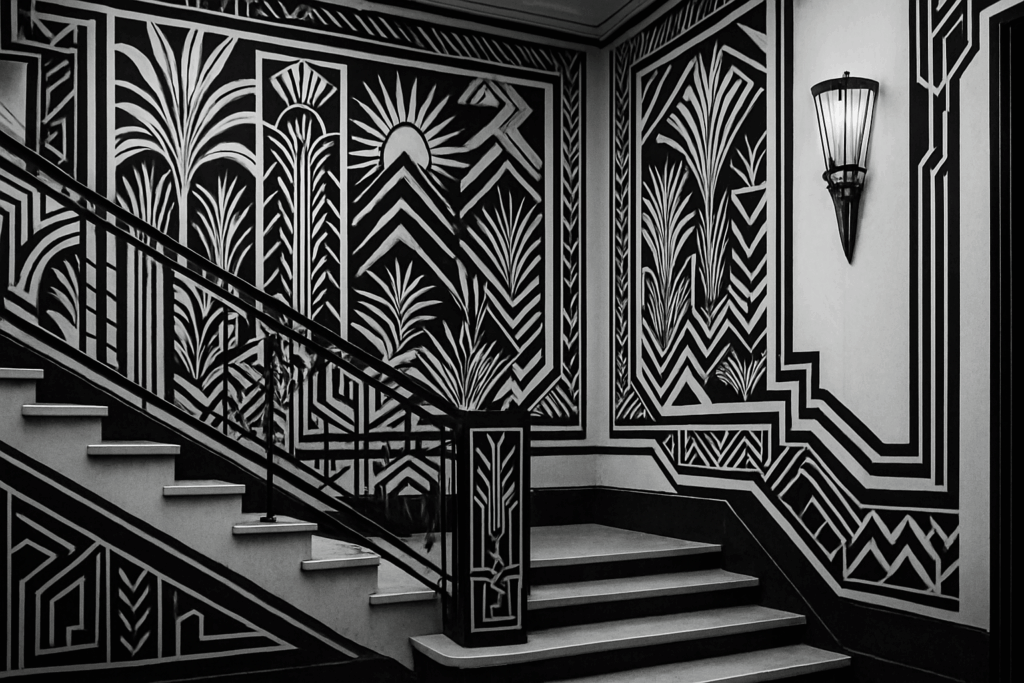
【かたちが旅をする ─ 幾何学模様の道のり/
The Journey of Form — Tracing the Path of Geometric Patterns 】
イスラームの幾何学模様が持つ不思議な引力に気づいたとき、それが単なる装飾以上のものに感じられました。反復する形のなかに、無限を思わせる静けさが漂い、どこか祈りにも似た感覚を宿していたのです。
こうした幾何学意匠の源流をたどっていくと、そこには壮大な文化の旅路が広がっていました。イスラーム世界において具象的な偶像が制限されていたこともあり、幾何学は神聖な象徴として、精緻に発展してきたのです。
モスクの壁面、天井のタイル、書物の装飾……それらは単なる模様ではなく、「宇宙の秩序」を可視化しようとする知の結晶でもありました。 やがてその美学は、8世紀ごろからイスラーム勢力がイベリア半島(現在のスペイン)へと広がるなかで、西洋世界にも波及していきます。スペイン南部のアルハンブラ宮殿に残るモザイク装飾は、その代表例と言えるでしょう。
数学と詩が融合したかのような意匠の数々は、見る者に畏敬の念を抱かせると同時に、深い思索へと導きます。 さらにその後、中世からルネサンス期にかけて、幾何学的デザインはイギリスやフランスへと受け継がれ、建築、ステンドグラス、織物など様々な芸術領域で再解釈されていきました。
特に19世紀末から20世紀初頭にかけてのアール・デコ様式において、東洋的な意匠やイスラーム幾何学の影響が色濃く反映されています。 そうした歴史をひもといていくと、かたちは国や宗教を超えて、静かに旅をしていたのだと気づかされます。幾何学模様とは、ある種の「普遍性」をたたえた言語なのかもしれません。
English
When I first became aware of the mysterious pull of Arabian geometric patterns, they felt like something far more than mere decoration.
Within their repeated forms, there was a quietude that evoked infinity—a sense not unlike prayer seemed to dwell within them.
Tracing the origins of such geometric designs reveals a vast cultural journey.
In the Islamic world, where figurative imagery was often restricted, geometry developed with extraordinary refinement as a sacred symbol.
On the walls of mosques, in tiled ceilings, in the ornate borders of manuscripts—these were not just decorative motifs, but visual manifestations of cosmic order, born of knowledge and devotion.
This aesthetic sensibility eventually spread westward, particularly after the 8th century, as Islamic influence expanded across the Iberian Peninsula, in what is now Spain.
The mosaic designs of the Alhambra Palace in southern Spain stand as some of the most iconic examples—intricate compositions where mathematics and poetry seem to merge, inviting both awe and contemplation.
Over time, these geometric sensibilities were carried further into Europe.
From the Middle Ages through the Renaissance, geometric design was reinterpreted across various artistic disciplines, from architecture and stained glass to textiles and ornament.
By the late 19th and early 20th centuries, during the rise of the Art Deco movement, the influence of Eastern aesthetics and Islamic geometry had become especially pronounced.
Looking back on this long history, one begins to see that form itself has traveled—silently crossing cultures, faiths, and eras.
Perhaps geometric patterns are, in their essence, a kind of universal language—one that speaks beyond words, across boundaries.
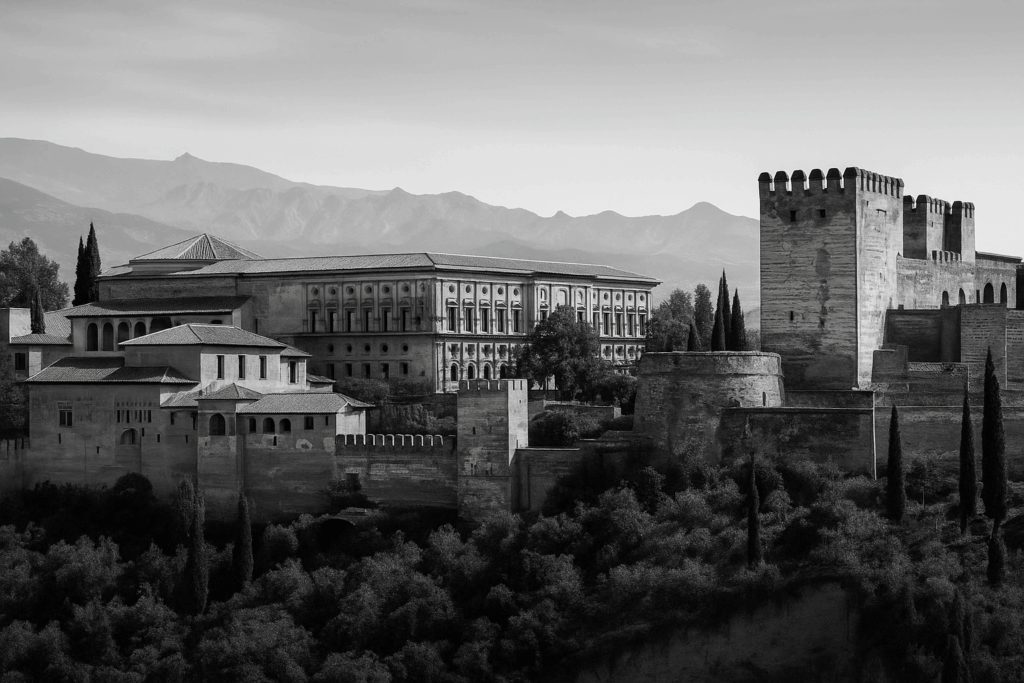
アルハンブラ宮殿/ Alhambra Palace
【次回予告】
幾何学模様は、装飾以上の何かを秘めているようにも感じられます。
かたち(図形)を繰り返すその運動には、生命の拍動のようなリズムがあり、静けさの奥に広がる深い思索の余白があります。
かつてアラビアの砂漠の民が、星空の下で感じていた宇宙の調和。
それは、緻密な幾何学模様となって表れ、人々の祈りや精神性を映し出す「目に見える言語」となっていきました。
こうした視点は、現代に生きる私たちにとっても、心の深い場所に響く何かを持っているように思うのです。
次回は、「幾何学の装飾性と精神性」について、もう少し掘り下げてみたいと思います。
五島アサミ(Asami GOTO)
English
Geometric patterns are more than mere decoration.
Their repeated forms move with a rhythm akin to the heartbeat of life, offering a quiet space for deep contemplation beneath the surface of stillness.
Long ago, the desert peoples of Arabia gazed at the stars and felt the harmony of the cosmos.
That sense of order and reverence took form in intricate geometric designs—becoming a visible language that expressed both prayer and spirituality.
Even today, such patterns seem to resonate with something deep within us.
They speak to the inner landscapes of the human spirit across time and culture.
In the next piece, I hope to explore further the connection between the decorative and the spiritual in geometry.
五島アサミ(Asami GOTO)
Contemporary Artist / Nihonga & Geometric Embroidery + Sumi Art / Tokyo, Japan
